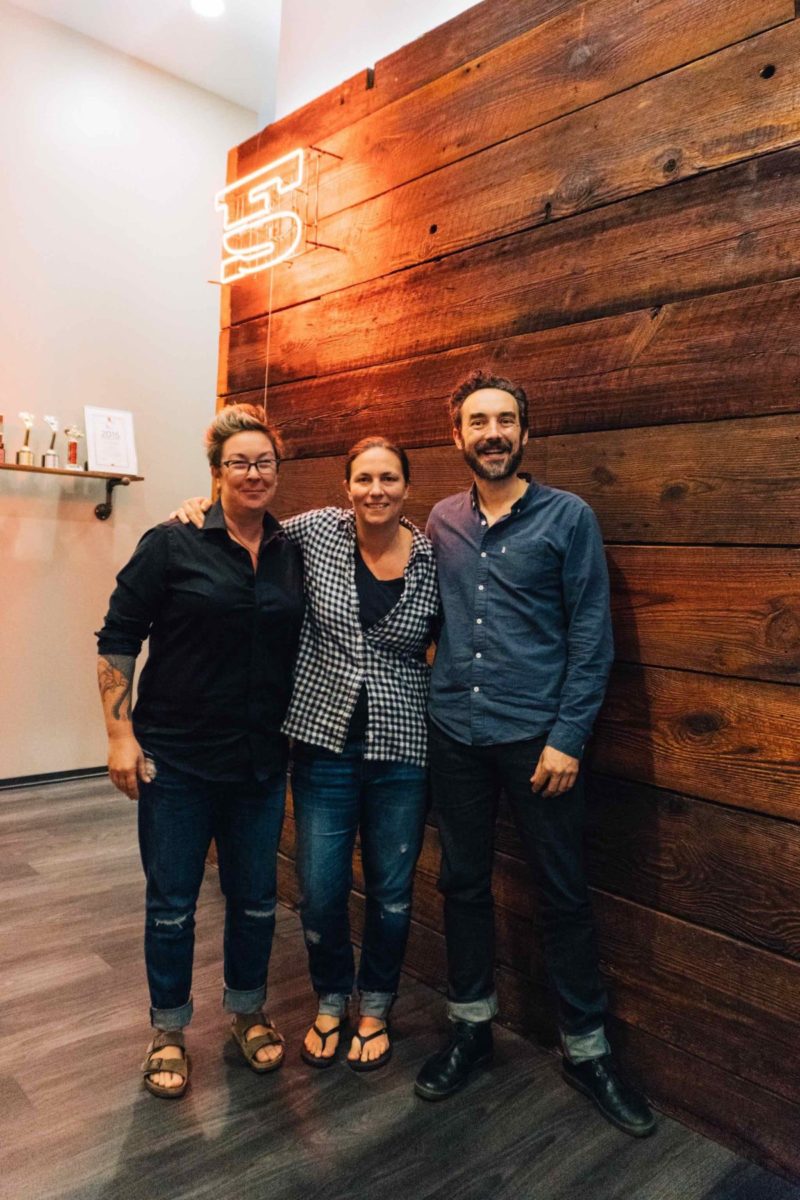As an art student in the ’90s, Tracey Halvorsen at first viewed the web as a way to get her paintings out to a wider audience.
“If I could get it on the web, anyone could see it. It just seemed like the most practical thing for me to do. It especially resonated, with me, feeling the limited exposure that any fine artist was at that stage,” the cofounder and Chief Visionary Officer of Hampden-based web design agency Fastspot said.
After moving to Baltimore from Cleveland and attending Maryland Institute College of Art for grad school, she found the web was its own medium.
“I could create things on the computer, and that would be considered art, too. It was a very open environment,” she said. Uploading a stop-motion animation she made with her wife and eventual Fastspot cofounder Amy Goldberg to the web took a lot longer than it does today, but the payoff of being able to send it around the world was worth it. With mastery of Flash, Photoshop and HTML, there was a chance to get paid in real dollars.
“That was the most money I’d ever made doing anything,” she said of that early work in web design.
After experience working for others, Halvorsen and Goldberg began plotting a business of their own in the back of Peter’s Inn. There was also a nudge from lynda.com’s Lynda Weinman. Fastspot officially launched in 2001 out of a rowhouse in Fells Point.
“I really feel like we were in stealth mode for 12 years. Over that time, we were really focused on the work we were doing and bringing in people that were part of that,” Halvorsen said. “It was about the culture being supportive, hard-working. We tried to find clients that respected us and we could work with collaboratively.”
While it wasn’t necessarily on purpose, they found a niche building websites for higher education and cultural institutions. To Halvorsen, the common thread between Fastspot and the institutions is that they both recognize that change is necessary when moving from the physical space to the digital space. She calls Fastspot’s work with clients “a bonding experience.”
“It’s going to change you as an organization I think for the better, but we’re going to force you to think about all of these touchpoints you have going on with people, and get out of the mindset that you’re just putting bits of a brochure out there in different places,” Halvorsen said.
Among many clients, the agency has redesigned websites for Yale University, Mt. Vernon (as in, George Washington’s house), the Cooper-Hewitt Museum-backed National Design Awards. Recently, they also moved into healthcare, which brings with it a focus on designing websites that are for the patient.
Internally, Halvrosen and Goldberg built a team that is a rare mix of developers and designers.
“It’s the fusing of the technology and the creative that I think is so dynamic and so exciting. The kind of problem solving those mindsets can have is powerful. It’s not decorative, it’s not technical. It’s not purely aesthetic.”
Given the size of the projects, ensuring that they could get the work done was also key in building their reputation.
In 2013, the growing company decided to move out of Southeast Baltimore to a space in Mill No. 1 in Hampden. The pigeons in the space pre-renovation showed that it also required vision, but Halvorsen said they liked the mix of the natural environment and the ability to design a warm and open space — this time in the physical world. It’s now a two-floor office housing more than 20 employees, with the potential for more growth on another floor.
With the expansion, the company was recognized on the Inc. 5000 for 188 percent growth over the last three years. The redesigned websites continue to roll out, with the Kenyon College Alumni Bulletin launching this week.
The connection to MICA has continued. Plenty of the agency’s hires come from the art school that Halvorsen attended, and staff still teach. Now, it is also working directly with MICA on a website redesign.
“We selected Fastspot for their deep experience in higher education and their knowledge about arts and culture — but even more importantly, their understanding of the need for an exceptional user experience,” said MICA VP of Strategic Communications Debra Rubino. “And the fact that Fastspot cofounder and key staff are MICA alumni made the choice even sweeter for us.”
Baltimore’s creative undercurrent is often cited as one of the city’s strengths. As leaders like MICA President Samuel Hoi have noted, there’s also a belief that it can become an economic driver. Fastspot shows how that’s possible through building a business, even for those who spend a dozen years not seeking the spotlight.
Join the conversation!
Find news, events, jobs and people who share your interests on Technical.ly's open community Slack

Baltimore daily roundup: Medtech made in Baltimore; Sen. Sanders visits Morgan State; Humane Ai review debate

Baltimore daily roundup: The city's new esports lab; a conference in Wilmington; GBC reports $4B of economic activity

Baltimore daily roundup: Find your next coworking space; sea turtle legislation; Dali raided and sued


